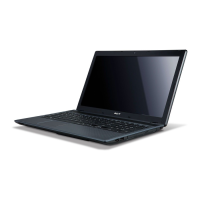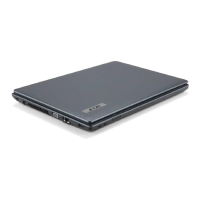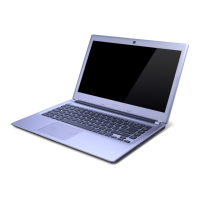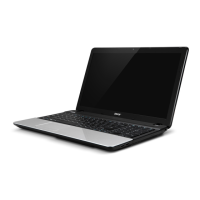What to do if the voltage is not correct on Acer Laptop?
- SstuartortegaSep 9, 2025
If the voltage is not correct in your Acer Laptop, replace the power adapter.

What to do if the voltage is not correct on Acer Laptop?
If the voltage is not correct in your Acer Laptop, replace the power adapter.
What to do if the voltage is within the range on Acer Aspire 4350 Laptop?
If the voltage is within the range for your Acer Laptop, replace the System board. If the problem is not corrected, see "Undetermined Problems".
What to do if the charge indicator still does not light up on Acer Aspire 4350?
If the charge indicator still does not light up on your Acer Laptop, replace the battery pack or the DC/DC charger board.
What to do if my Acer Laptop has no beep, the power-on indicator turns on and a blinking cursor shown on LCD during POST?
If your Acer Laptop shows no beep, the power-on indicator turns on and a blinking cursor is shown on the LCD during POST, ensure every connector is connected tightly and correctly.
| Optical Drive | DVD-Super Multi DL drive |
|---|---|
| Memory | Up to 4GB DDR3 SDRAM |
| Storage | 320GB or 500GB HDD |
| Display | 14.0" HD (1366 x 768) LED-backlit TFT LCD |
| Operating System | Windows 7 Home Basic |
| Networking | Wi-Fi 802.11b/g/n, Ethernet LAN |
| Ports | HDMI, VGA, Ethernet, Headphone/Microphone combo jack |
| Battery | 6-cell Li-ion battery |
States the copyright ownership and usage restrictions for the publication.
Outlines limitations of warranties and responsibilities for the guide's content.
Summary of computer features: platform, memory, display, graphics, storage, audio, communication, I/O ports, environment, and dimensions.
Diagram illustrating the computer's internal hardware architecture and component connections.
Guides users through the notebook's physical layout and key components on the top view.
Explains the key combinations used to control system functions like brightness and volume.
Describes external views (front, rear, left, right, base) of the notebook, identifying ports and indicators.
Detailed specifications for processor, BIOS, system memory, LAN, Bluetooth, storage, and other hardware components.
Details AC adapter specifications and explains system power management states (ACPI modes).
Explains access and navigation of the BIOS Setup Utility for hardware configuration.
Instructions for using keys to navigate BIOS menus and change parameters.
Details the content and function of BIOS screens: Information, Main, Security, Boot, Exit.
Procedures for updating BIOS and removing hard disk drive passwords.
Lists necessary tools and outlines the stages for disassembling the notebook.
Flowchart and steps for removing external components like battery, ODD, and back cover.
Step-by-step guides for removing key components: Battery, Optical Drive, Back Cover, HDD, WLAN, DIMM.
Flowchart for disassembling the notebook's main internal components.
Procedures for removing Keyboard, Upper Case, Touchpad, Speakers, Power Button, Bluetooth, RTC Battery, USB Board, Main Board.
Guides for removing Heatsink, CPU, LCD Module, Bezel, Brackets, FPC Cable, Web Camera, Microphone, and Antennas.
Procedure for diagnosing problems and outlines system checks for various components.
Lists error messages, their causes, and actions based on symptoms.
Guides for diagnosing and isolating intermittent and unclear system problems.
Diagrams identifying connectors on the top and bottom views of the main board.
Procedures for clearing BIOS passwords and recovering BIOS using crisis disk.
Provides FRU lists for repairs and RMA, including an exploded diagram of components.
Detailed FRU lists for Adapters, Battery, Boards, USB, Touchpad, Cables, Chassis, Speakers, ODD, CPU, HDD, Heatsink, Keyboard.
Details common specifications and regional configurations for various Aspire 4750/4750G models.
Lists compatible hardware devices and peripherals tested for the computer system.
Lists compatible memory card types, including Memory Stick, SD Card, and XD Card.
Describes online technical support services, website resources, and downloadable technical materials from Acer.











